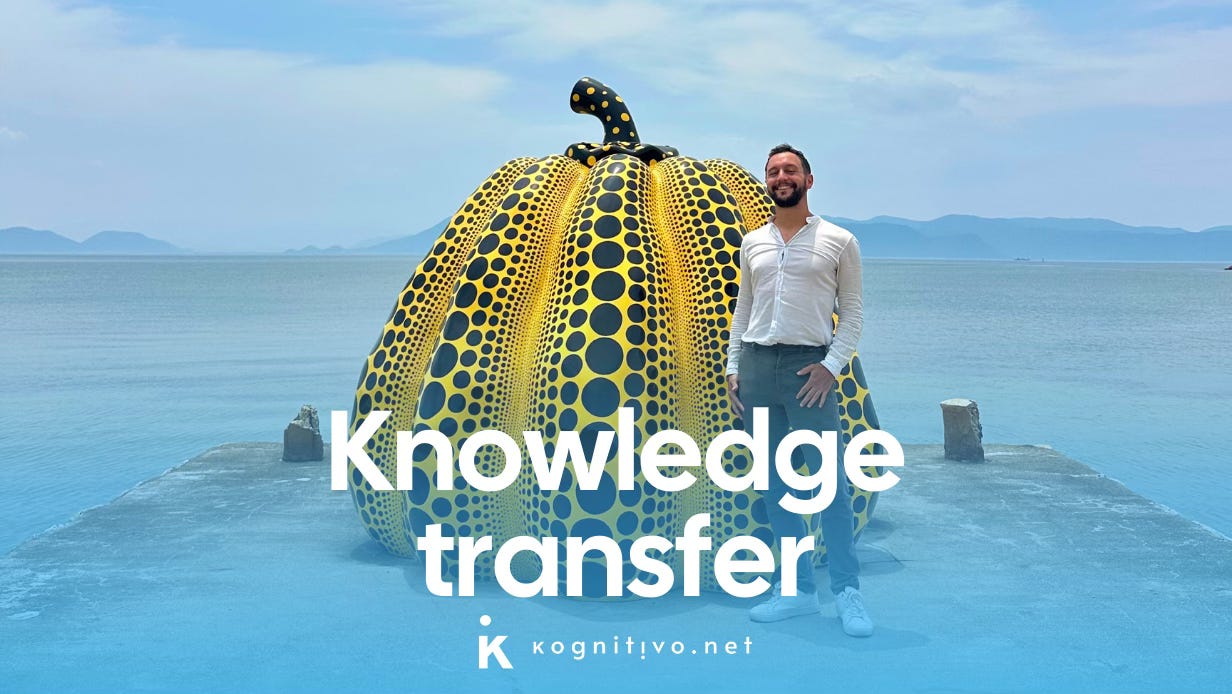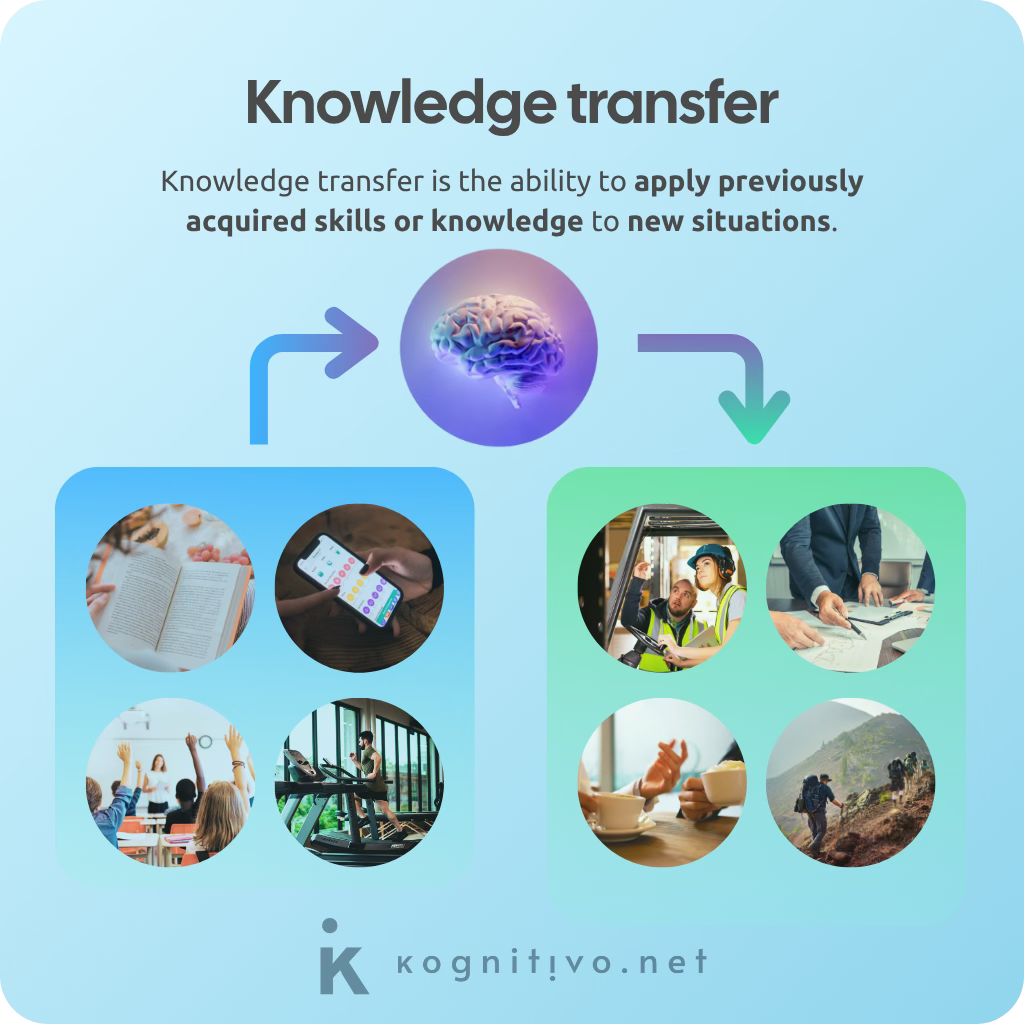Knowledge transfer: why can't we copy and paste knowledge?
Knowledge is only meaningful if we can use it in real life. But applying what we learned in a different context isn't that easy. Let's unpack the science of transfer.
Movies and TV series love a good 'that's how they learned to be a master' scene. One minute the protagonist is falling all over the place, the next they're slicing arrows mid-air.
Mulan becomes a warrior in a musical number. In Legally Blonde, Elle Woods studies with scented highlighters, flips her hair and becomes a legal powerhouse. The Queen's Gambit's Beth Harmon plays a few games in a basement and suddenly humiliates grandmasters. Neo straight up downloads kung fu into his brain in The Matrix like it’s an app update.
Popular media often glamorizes how characters learn and apply new skills. They’re fun to watch. And yes, the whole point is that these characters are extraordinary. But they’ve ruined our expectations. Real learning doesn’t work like that.
Many of us know the feeling: you understand something perfectly, then fall flat the moment the setting changes. Like remembering a grammar rule from your textbook but forgetting it mid-conversation. Or following a detailed recipe, then freezing when the spoon and the eggs are in your hands.
The real challenge is knowledge transfer, and it explains why we can't just copy and paste knowledge from one setting to another.
What is knowledge transfer?
Knowledge transfer is the ability to apply knowledge to new and unfamiliar situations. It’s one of the most valuable, yet elusive, learning goals according to cognitive science.
There are two kinds: near transfer and far transfer. Near transfer happens when the new situation looks a lot like the learning context: for instance, typing a vocabulary item into the app where you learned it, just in a different exercise. Far transfer means using your skills in situations that feel nothing like where you learned them, like speaking French in a noisy café in Paris when all you’ve practiced is Duolingo.
Far transfer is more demanding and far less likely to occur without intentional design and practice. Not because you don’t care enough. Because your brain encodes knowledge with the original context anchored to it, and detaching it takes effort.
Your brain is a context junkie
When you learn something, your brain doesn’t just save the main idea. It also stores contextual details: the setting, emotions, instruction style and even irrelevant stuff like background noise.
This dependency on context explains why students may ace exams but struggle to apply the same knowledge in professional or informal settings. Retrieval becomes tied to contextual signals that aren’t always present.
How to support transfer
Here are some science-backed strategies to make you a transfer pro:
Practice the real thing. Make the learning context resemble the one where you’ll apply it. This helps bridge the most common transfer gap: between learning environment and real-life practice.
Change up your conditions. Try different ways, sequences and contexts of study, otherwise your brain may fall into the recognition trap.
Find the principle. After every exercise, ask what the underlying rule is. Don’t just mimic. Extract.
Then test it somewhere weird. Learn negotiation? Try getting your landlord to fix the heater without raising your rent. Study logic? Apply it to your friend’s dating drama. If it works where you don’t expect it to, it’ll work anywhere.
Transfer signals deep learning
Transfer often feels harder than initial learning, but like other desirable difficulties, that discomfort is a good sign. It means your brain is reorganizing knowledge for real use.
When someone can skillfully adapt what they know to new contexts, most of us see it as a signal of true mastery. It's a socially well-established perception, not only because it's true but also because it's impressive!
So no, you can’t just download kung fu into your brain, but you can train it to think like a scientist. That’s what the subscribe button is for. Also, share this with your friend who thinks watching TED Talks counts as professional development.
Keep learning
Nerd out with AI
Prompt suggestions. Always ask follow-up questions
I want to make sure I actually transfer what I’m learning. Can you help me design a study routine or practice plan that builds far transfer into my learning process?
Why is it that I understand something in theory, but freeze when I try to use it in real life? How can I fix that?
Act as a teacher and test me using retrieval practice on “knowledge transfer.” Ask me 6 questions, one at a time, only proceeding when I answer each one. Make the questions progressively harder.
Links
📑 When and where do we apply what we learn? A taxonomy for far transfer: This landmark study by Barnett and Ceci from 2002 introduced a structured framework describing nine dimensions of transfer (domain, context, time, etc.). It also explains why far transfer is rare and how to design tasks to promote it.
📃 Teaching for transfer: This classic article by Perkins and Salomon from 1984 introduced the foundational model to study knowledge transfer. It’s still a pleasant read today.
The cover photo includes one of Yayoi Kusama’s iconic pumpkin sculptures on the island of Naoshima, Japan.





Thanks for the insights!